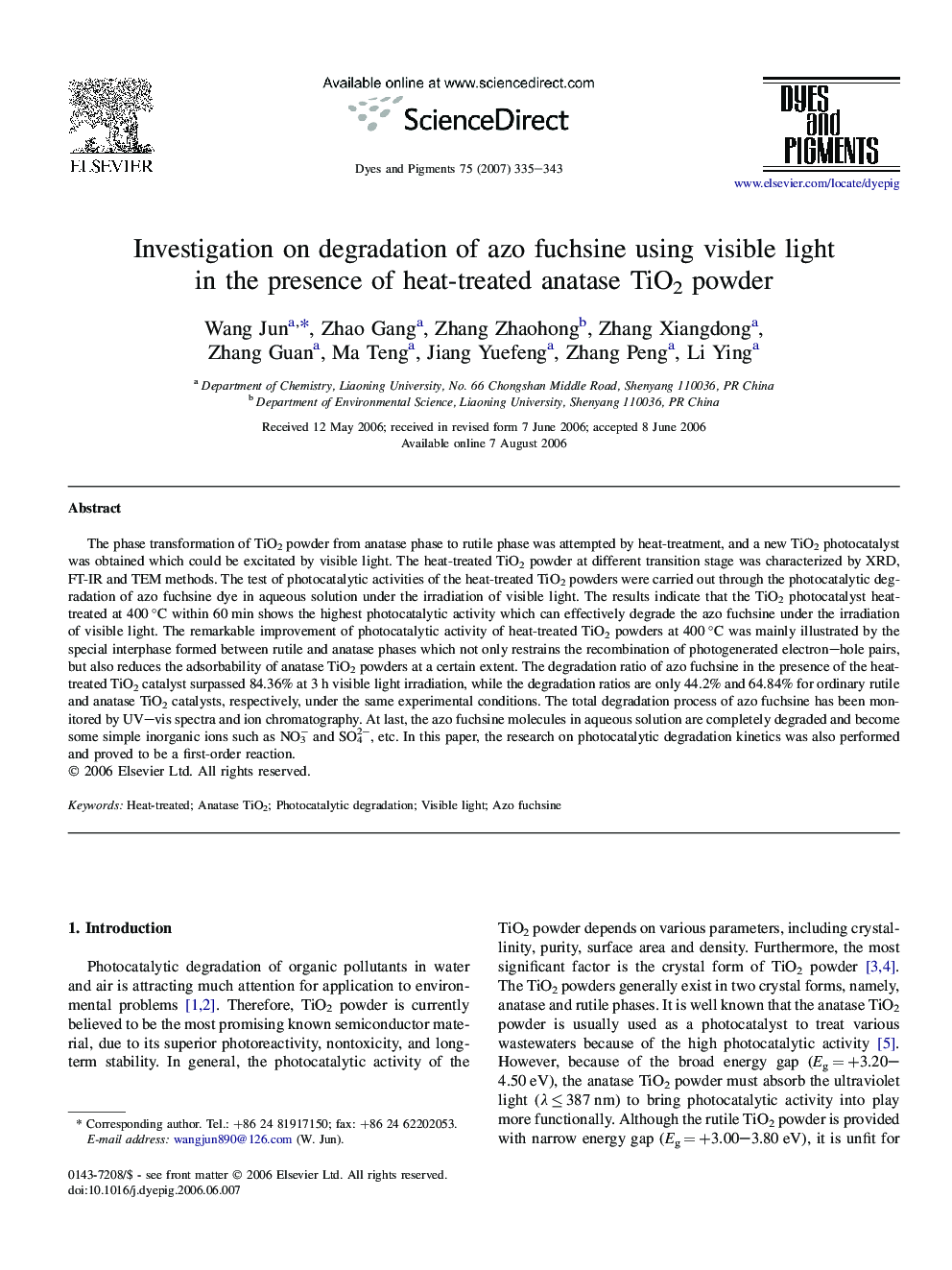| Article ID | Journal | Published Year | Pages | File Type |
|---|---|---|---|---|
| 177601 | Dyes and Pigments | 2007 | 9 Pages |
The phase transformation of TiO2 powder from anatase phase to rutile phase was attempted by heat-treatment, and a new TiO2 photocatalyst was obtained which could be excitated by visible light. The heat-treated TiO2 powder at different transition stage was characterized by XRD, FT-IR and TEM methods. The test of photocatalytic activities of the heat-treated TiO2 powders were carried out through the photocatalytic degradation of azo fuchsine dye in aqueous solution under the irradiation of visible light. The results indicate that the TiO2 photocatalyst heat-treated at 400 °C within 60 min shows the highest photocatalytic activity which can effectively degrade the azo fuchsine under the irradiation of visible light. The remarkable improvement of photocatalytic activity of heat-treated TiO2 powders at 400 °C was mainly illustrated by the special interphase formed between rutile and anatase phases which not only restrains the recombination of photogenerated electron–hole pairs, but also reduces the adsorbability of anatase TiO2 powders at a certain extent. The degradation ratio of azo fuchsine in the presence of the heat-treated TiO2 catalyst surpassed 84.36% at 3 h visible light irradiation, while the degradation ratios are only 44.2% and 64.84% for ordinary rutile and anatase TiO2 catalysts, respectively, under the same experimental conditions. The total degradation process of azo fuchsine has been monitored by UV–vis spectra and ion chromatography. At last, the azo fuchsine molecules in aqueous solution are completely degraded and become some simple inorganic ions such as NO3− and SO42−, etc. In this paper, the research on photocatalytic degradation kinetics was also performed and proved to be a first-order reaction.
